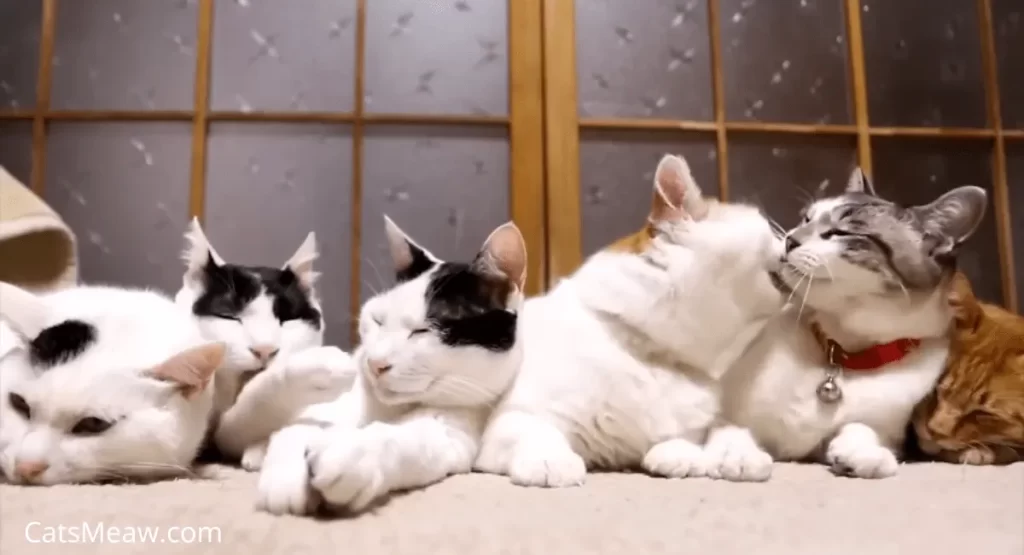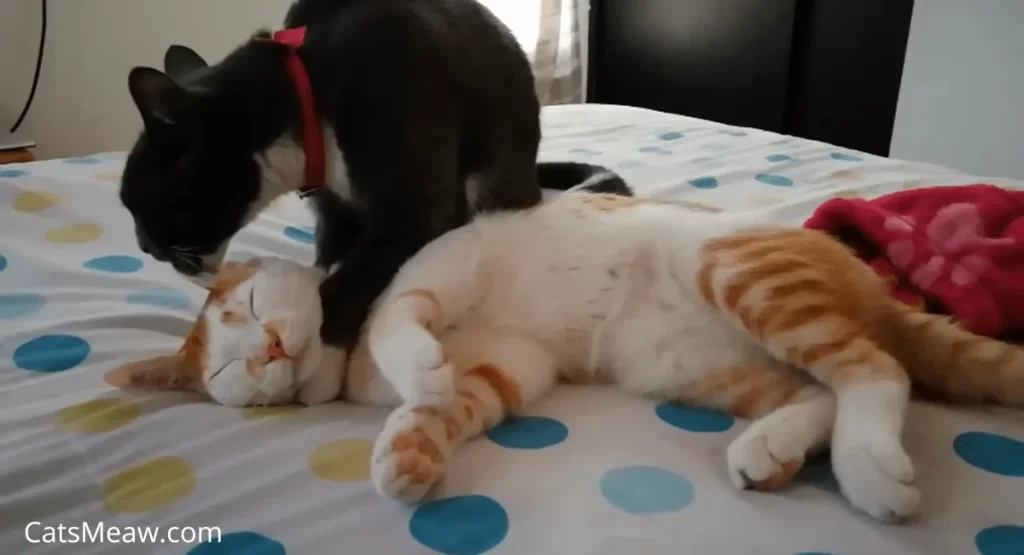If you’ve ever watched two cats grooming each other, you may have wondered about the purpose behind this behavior. Beyond being an adorable moment, cat grooming—scientifically known as allogrooming—is an integral part of feline social interaction. This behavior goes far beyond cleanliness, serving as a means of communication, social bonding, and even emotional comfort. In this detailed exploration, we’ll uncover why do cats groom each other, the benefits of this behavior, and what it means for your feline friends.

What Is Allogrooming?
Allogrooming refers to the social grooming behavior seen in animals of the same species, and it’s particularly prominent among cats. Unlike self-grooming, which focuses solely on maintaining personal hygiene, allogrooming serves broader social purposes. It’s a way for cats to connect, establish trust, and maintain harmony within their group.
In feral cat colonies, grooming is crucial for forming and strengthening relationships within the group. Similarly, in domestic settings, cats that share a home often use grooming to reinforce their bond. It’s not just a practical activity but also a powerful social tool.
The Emotional and Social Functions of Grooming
Strengthening Social Bonds
Cats are often perceived as independent creatures, but they’re also highly social animals. Grooming is one of the most significant ways they express affection and build trust. Through grooming, cats strengthen their social bonds, creating a sense of companionship and unity.
Our pick: The Best Cat Grooming Supplies
In multi-cat households, frequent grooming sessions indicate a close relationship. Cats that groom each other regularly often display other signs of affection, such as playing together or resting in close proximity.
Communication Through Scent
Cats have scent glands located around their face, paws, and tail. When they groom each other, they exchange scents, creating a shared “group identity.” This scent-sharing is crucial for maintaining harmony in a feline group, as it helps establish familiarity and reduce territorial disputes.
- Dominance Dynamics: Grooming can signal dominance. In multi-cat households, the dominant cat often initiates grooming as a way of asserting its role in the hierarchy.
- Equality and Reciprocity: On the other hand, when cats take turns grooming each other, it reflects a balanced relationship based on mutual trust and respect.
The Practical Benefits of Grooming
Hygiene and Cleanliness
Cats are meticulous groomers, but there are areas they simply can’t reach, such as the top of the head and under the chin. Grooming each other helps remove dirt, debris, and potential parasites from these hard-to-reach spots. This mutual care ensures that all members of the group maintain a clean and healthy coat.
Additionally, grooming helps stimulate the skin and distribute natural oils, which keep the fur shiny and healthy. While self-grooming handles most of these tasks, allogrooming adds an extra layer of thoroughness, particularly in areas prone to buildup.
Stress Relief and Comfort
Grooming isn’t just practical; it’s also emotionally soothing. The repetitive motions of licking help release endorphins in the brain, which promote relaxation and reduce stress. For the recipient, being groomed can feel like a comforting massage, while for the groomer, the act itself can be calming.
Cats often use grooming as a way to decompress after stressful situations or to reaffirm their bond after a minor disagreement.
Grooming as a Maternal Instinct
For mother cats, grooming their kittens is an instinctive behavior that begins immediately after birth. This grooming serves several essential functions:
- Hygiene: Cleaning the kittens and removing afterbirth.
- Stimulation: Encouraging the kittens to urinate and defecate, as they can’t do this independently at birth.
- Bonding: Establishing a strong emotional connection between the mother and her litter.
Related: How to Bathe a Cat: Best Bath & Grooming Tips
Even as kittens grow and begin to groom themselves, mother cats often continue to groom them as a way of maintaining their bond. This maternal behavior sometimes extends to other cats in the household, especially if the motherly instinct is strong.

Misunderstandings About Grooming Behavior
Why Do Cats Groom Each Other and Then Fight?
It’s not uncommon for cats to transition from grooming to fighting, leaving owners puzzled. This behavior often stems from overstimulation. While grooming is generally a calming activity, excessive stimulation can irritate the groomed cat, prompting a defensive reaction.
Some common triggers include:
- Mismatch in Preferences: One cat may enjoy grooming more than the other, leading to frustration.
- Territorial Sensitivities: If the grooming occurs too close to a preferred resting spot, the recipient may perceive it as an intrusion.
To reduce conflicts, provide ample space and ensure each cat has access to its own resources, such as food bowls and litter boxes.
Should Cats Always Groom Each Other?
Not all cats groom each other, and that’s perfectly normal. Grooming behavior varies depending on factors such as personality, socialization, and the nature of their relationship. Some cats express their bond in other ways, such as playing or resting together, while others may prefer to maintain their independence.
If your cats don’t groom each other, it doesn’t necessarily indicate a lack of affection. Observing their other interactions can provide a clearer picture of their relationship dynamics.
FAQs About Cat Grooming Behavior
Why do cats lick each other’s heads?
Cats often focus on grooming areas like the head and neck because these spots are hard to reach during self-grooming. Additionally, the head contains many scent glands, making it a prime location for reinforcing group identity.
Can grooming spread illnesses between cats?
Yes, grooming can sometimes transmit parasites, such as fleas, or infections. Regular veterinary check-ups and preventive care are essential to ensure the health of all cats in the household.
Do cats groom humans for the same reasons?
Cats may groom their human companions as a way of showing trust and affection. By grooming you, they’re incorporating you into their social circle and marking you with their scent.
How can I stop excessive grooming or fights?
Providing enrichment, such as interactive toys and scratching posts, can help redirect excessive grooming energy. If conflicts persist, consult a veterinarian or animal behaviorist for guidance.
How to Encourage Positive Grooming Behavior
To foster a healthy grooming relationship between your cats:
- Gradual Introductions: If introducing a new cat, ensure a slow and controlled introduction process.
- Provide Resources: Ensure each cat has its own food and water bowls, litter boxes, and resting spots.
- Use Pheromone Diffusers: These can create a calming environment and reduce tension.
By creating a supportive and stress-free environment, you can encourage positive interactions between your cats.
Conclusion
Cat grooming is far more than a hygiene routine—it’s a vital aspect of feline social behavior. From strengthening bonds and reducing stress to maintaining cleanliness and communication, allogrooming plays a crucial role in the lives of cats.
Understanding this behavior helps you better appreciate your cats’ interactions and provides insight into their unique relationships. Whether they’re sharing a grooming session or simply coexisting peacefully, your cats are demonstrating the depth of their social and emotional connections. With proper care and attention, you can ensure they continue to thrive in a loving and harmonious environment.
